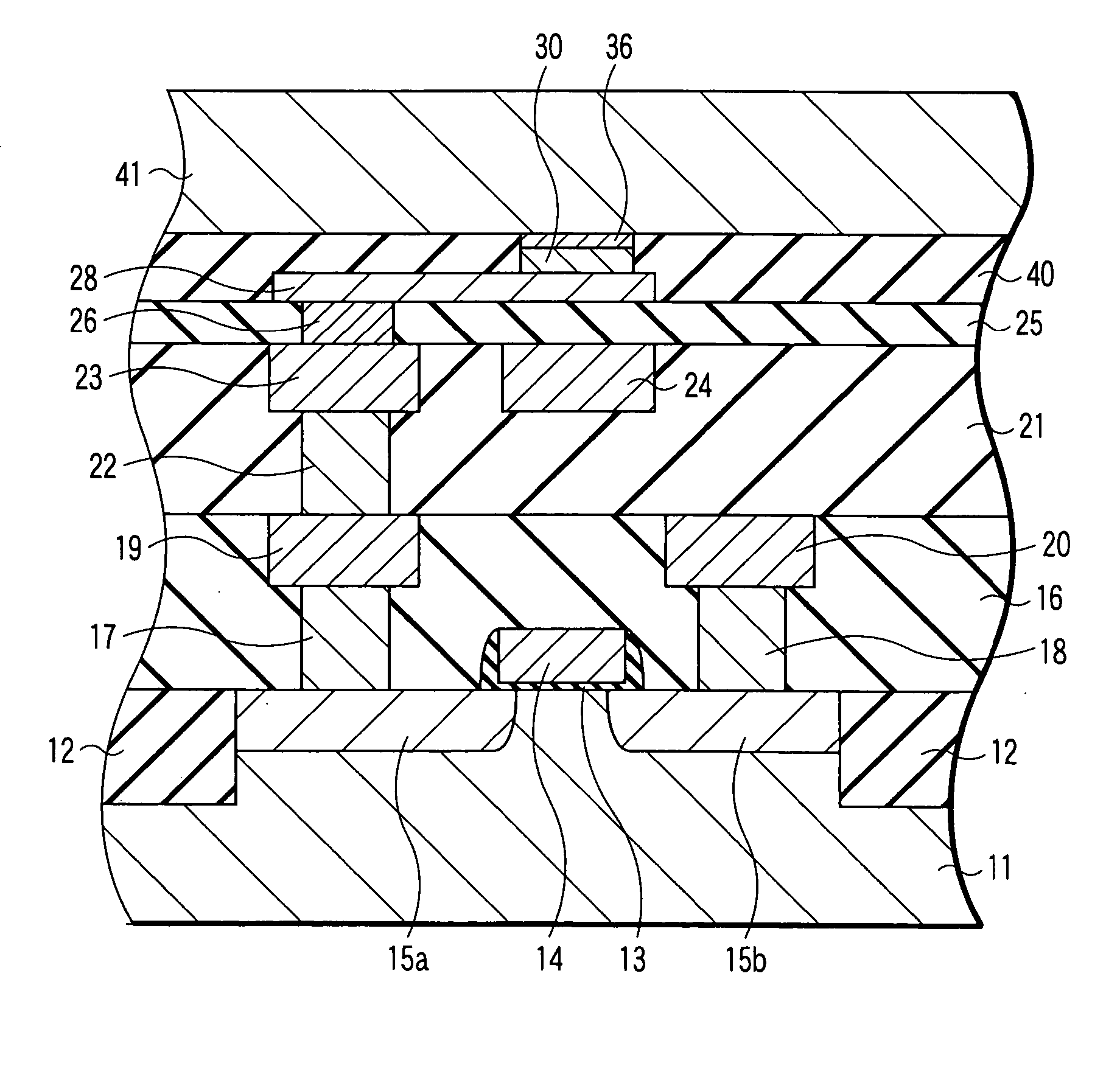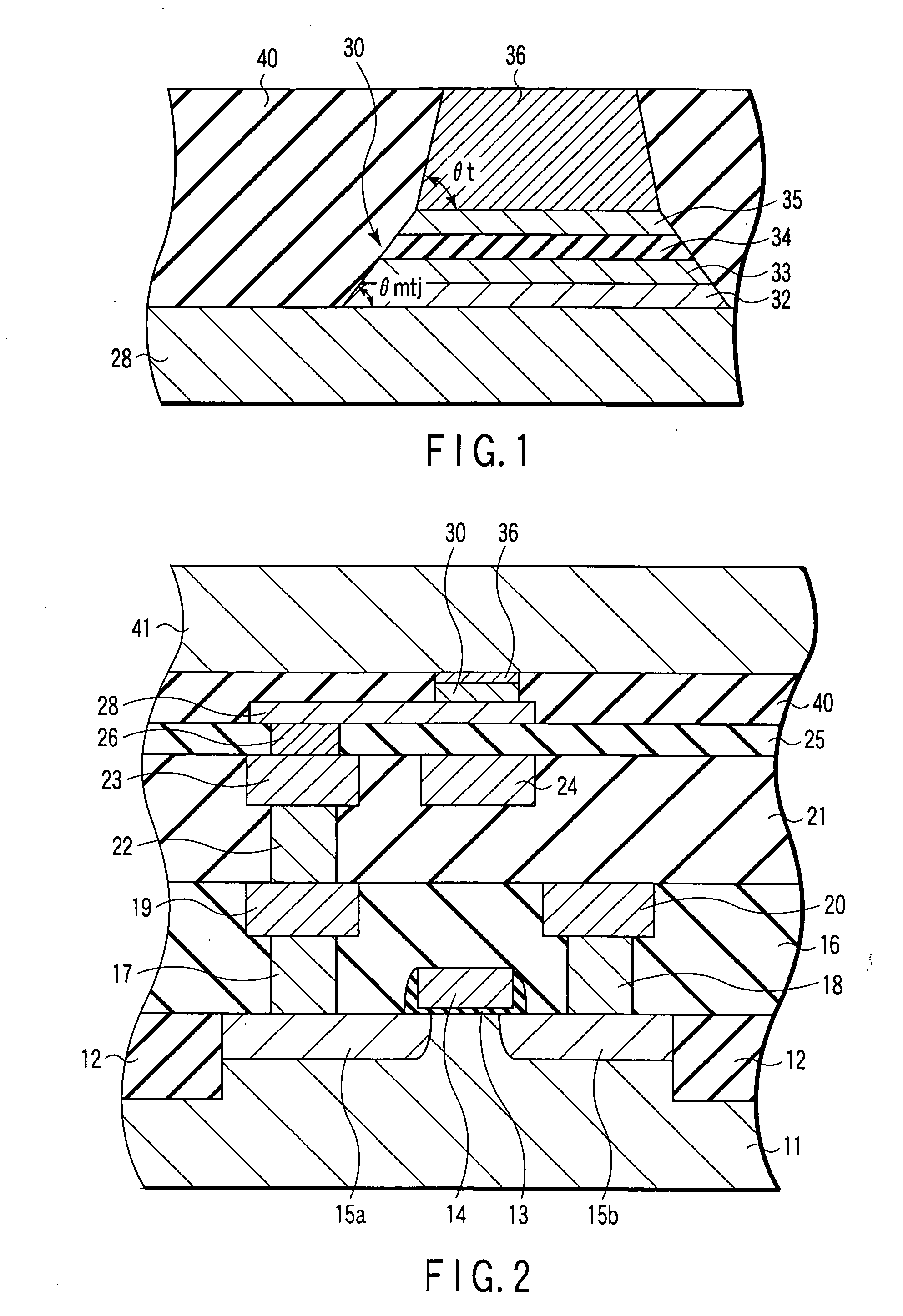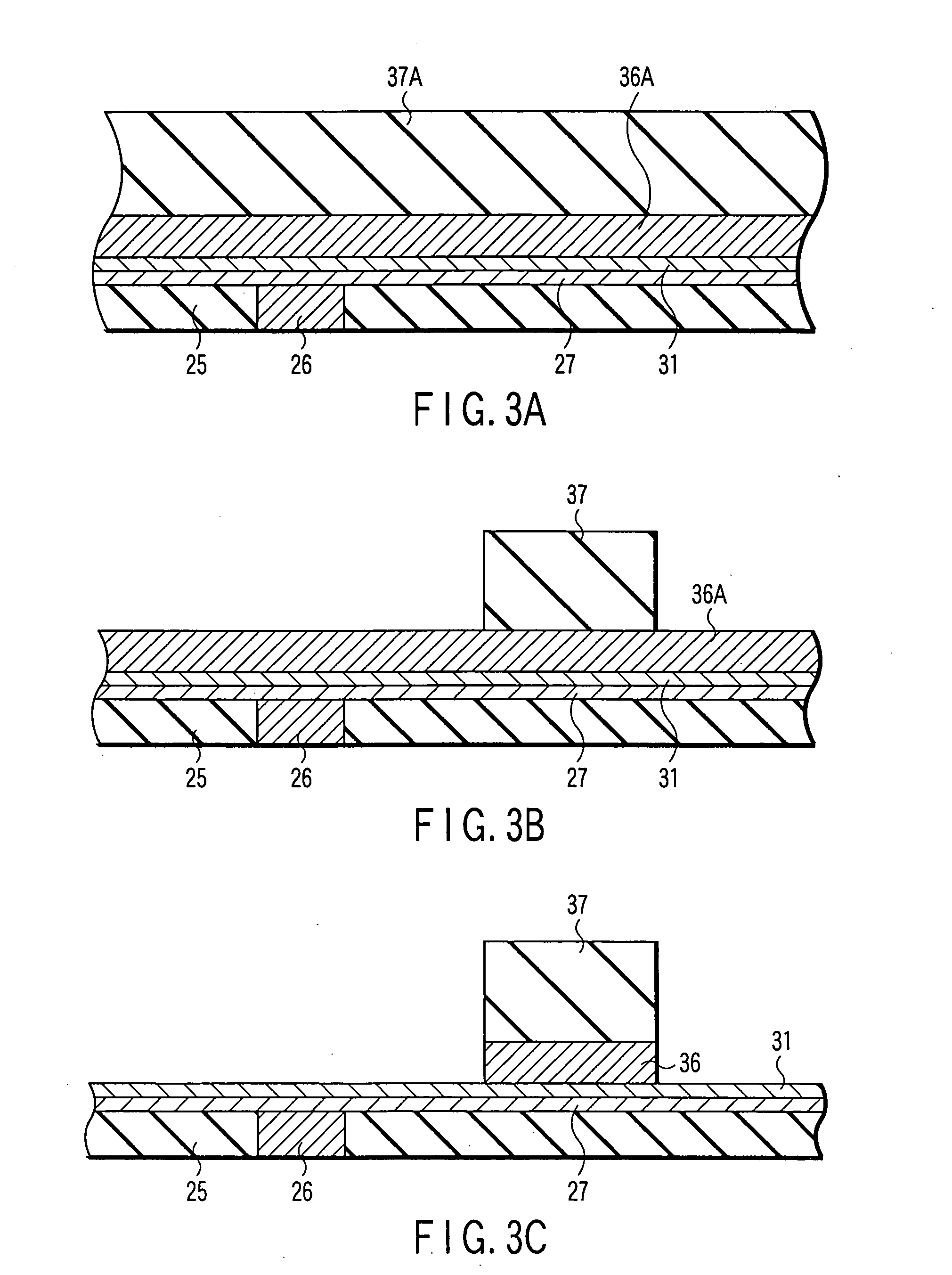Magnetic memory device and method of manufacturing the same
a memory device and magnetic technology, applied in the field of magnetic memory devices, can solve the problems of low vapor pressure, difficult processing in the ordinary semiconductor manufacturing process, and insufficient chemical reaction ra
- Summary
- Abstract
- Description
- Claims
- Application Information
AI Technical Summary
Problems solved by technology
Method used
Image
Examples
first embodiment
the present invention will now be described with reference to the accompanying drawings. In the description below of the first embodiment, the same or similar structural parts are denoted by like reference numerals and a detailed description is omitted to avoid overlapping description.
FIG. 1 is a cross-sectional view of an MTJ element 30 formed as a magneto-resistive element according to an embodiment of the invention. In FIG. 1, the MTJ element 30 is formed on a lower electrode 28. A mask (hereinafter referred to as “hard mask”) 36 is formed on the MTJ element 30. An interlayer insulation film 40 is integrally formed to cover the entirety of the lower electrode 28, MTJ element 30 and hard mask 36. The upper surface of the hard mask 36 is flush with the upper surface of the interlayer insulation film 40 and is exposed from the interlayer insulation film 40.
The MTJ element 30 has a four-layer structure. The MTJ element 30 comprises an antiferromagnetic layer 32, a first ferromagnet...
PUM
| Property | Measurement | Unit |
|---|---|---|
| taper angle | aaaaa | aaaaa |
| angle | aaaaa | aaaaa |
| angle | aaaaa | aaaaa |
Abstract
Description
Claims
Application Information
 Login to View More
Login to View More - R&D
- Intellectual Property
- Life Sciences
- Materials
- Tech Scout
- Unparalleled Data Quality
- Higher Quality Content
- 60% Fewer Hallucinations
Browse by: Latest US Patents, China's latest patents, Technical Efficacy Thesaurus, Application Domain, Technology Topic, Popular Technical Reports.
© 2025 PatSnap. All rights reserved.Legal|Privacy policy|Modern Slavery Act Transparency Statement|Sitemap|About US| Contact US: help@patsnap.com



